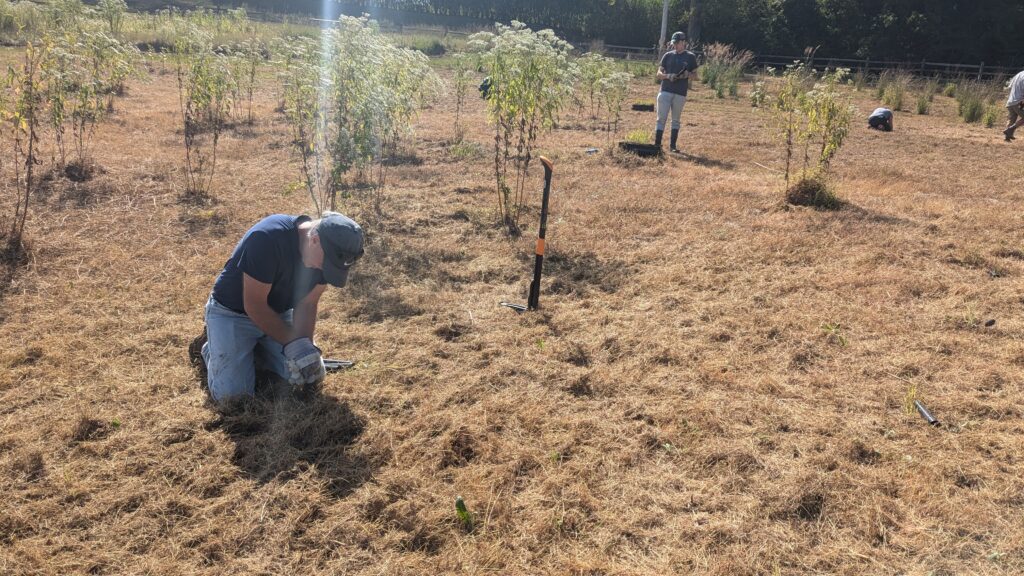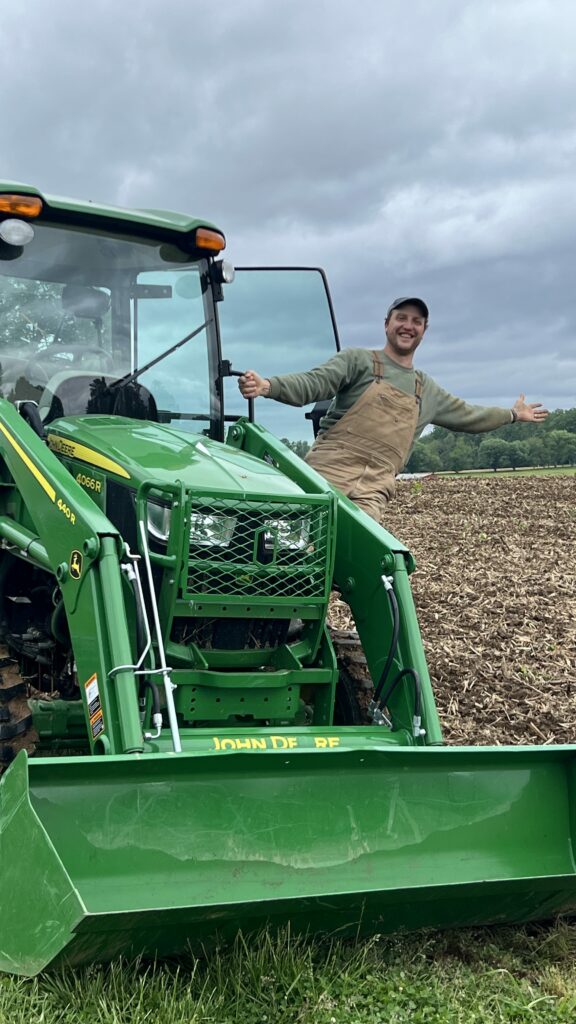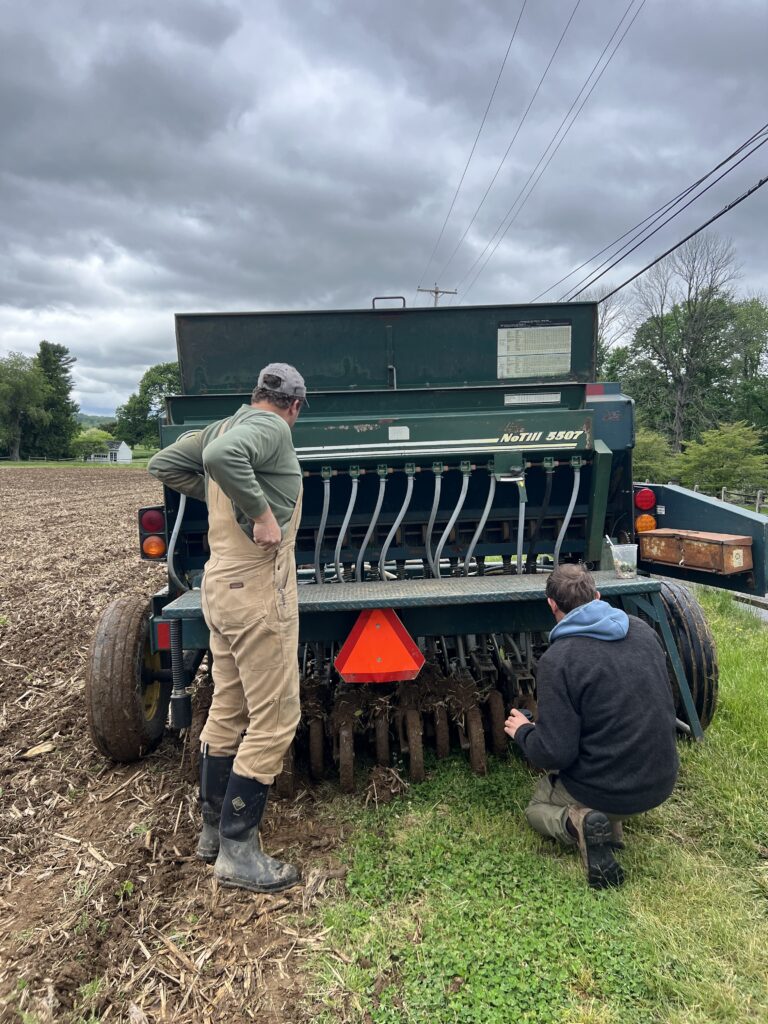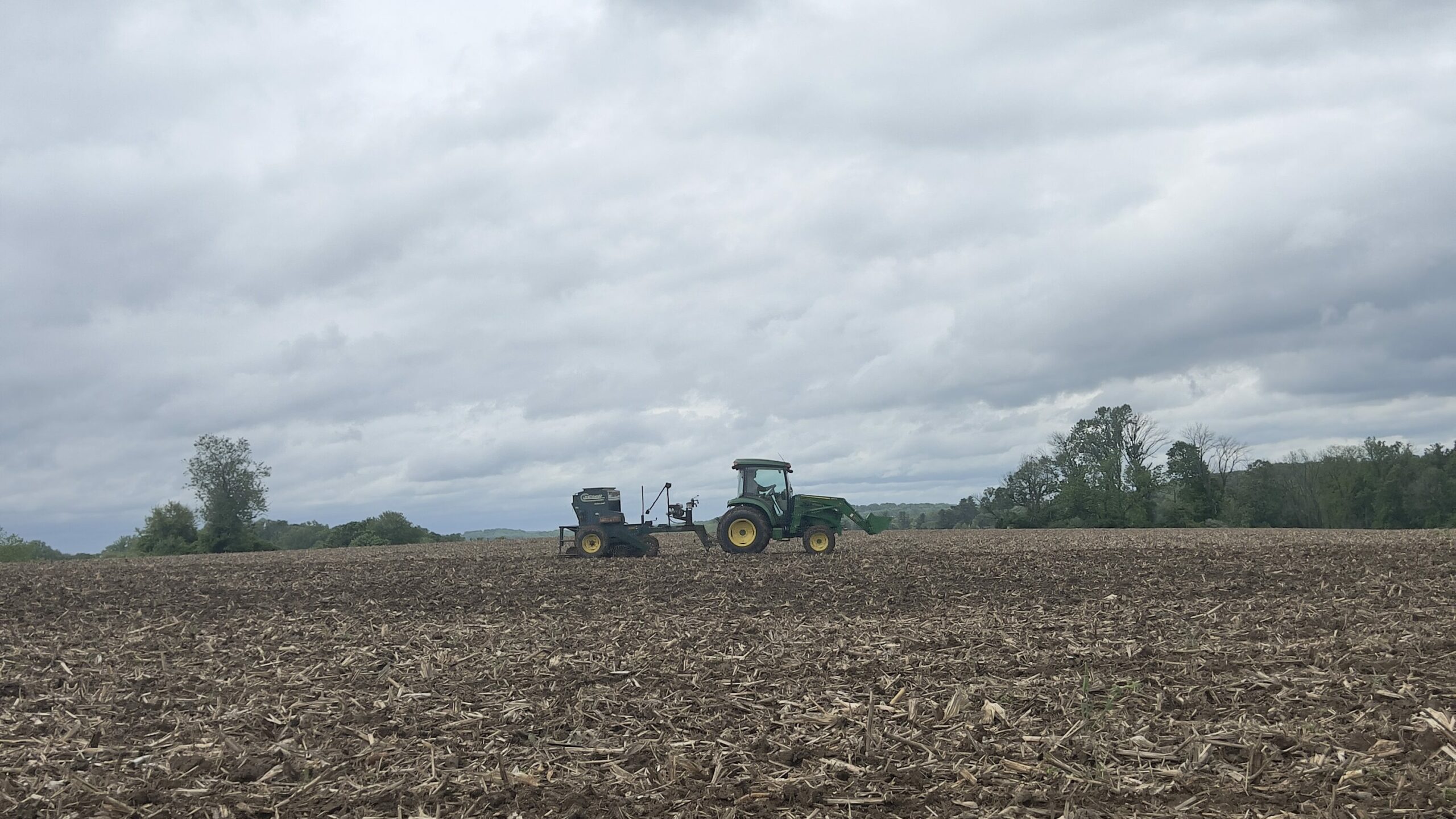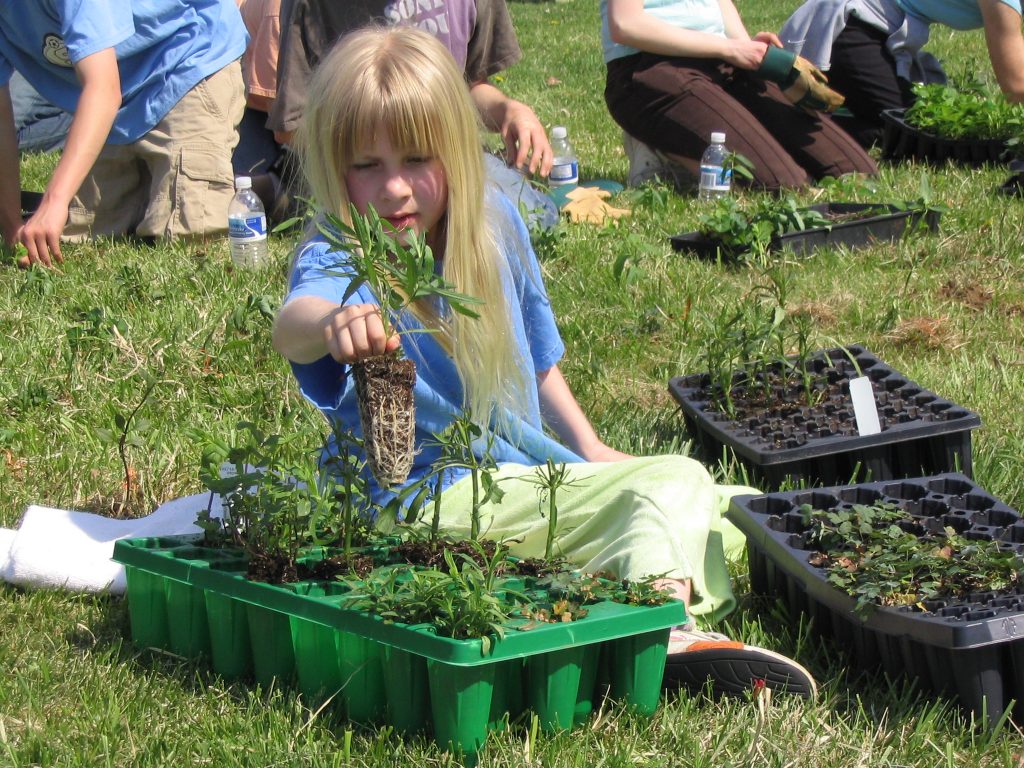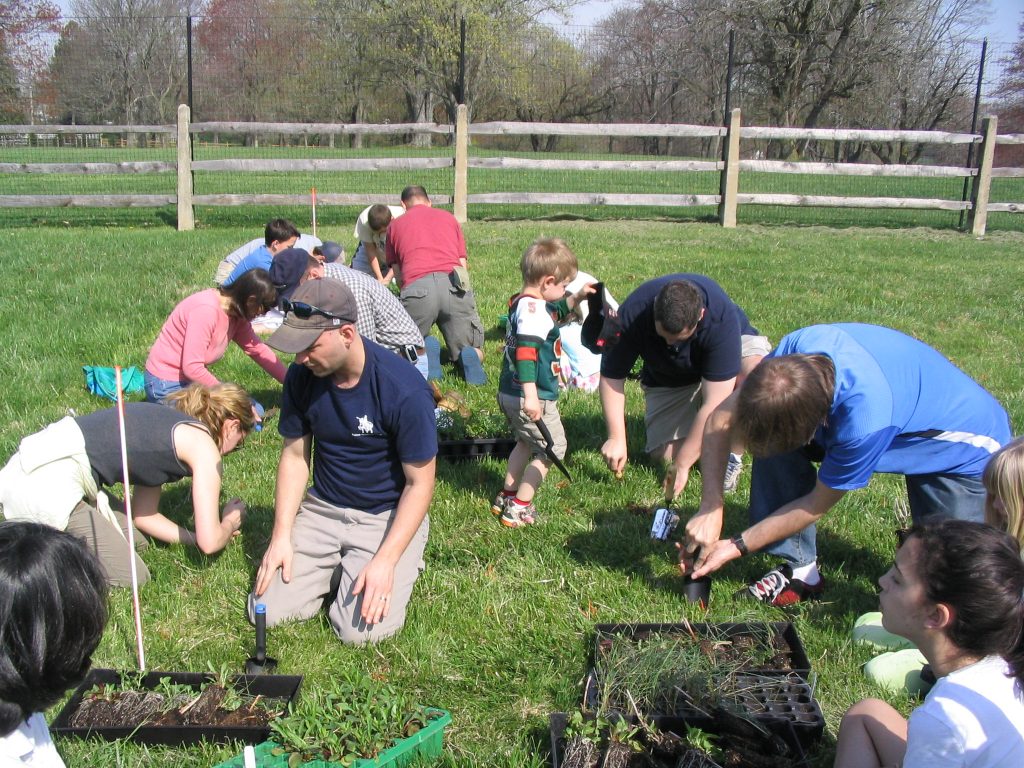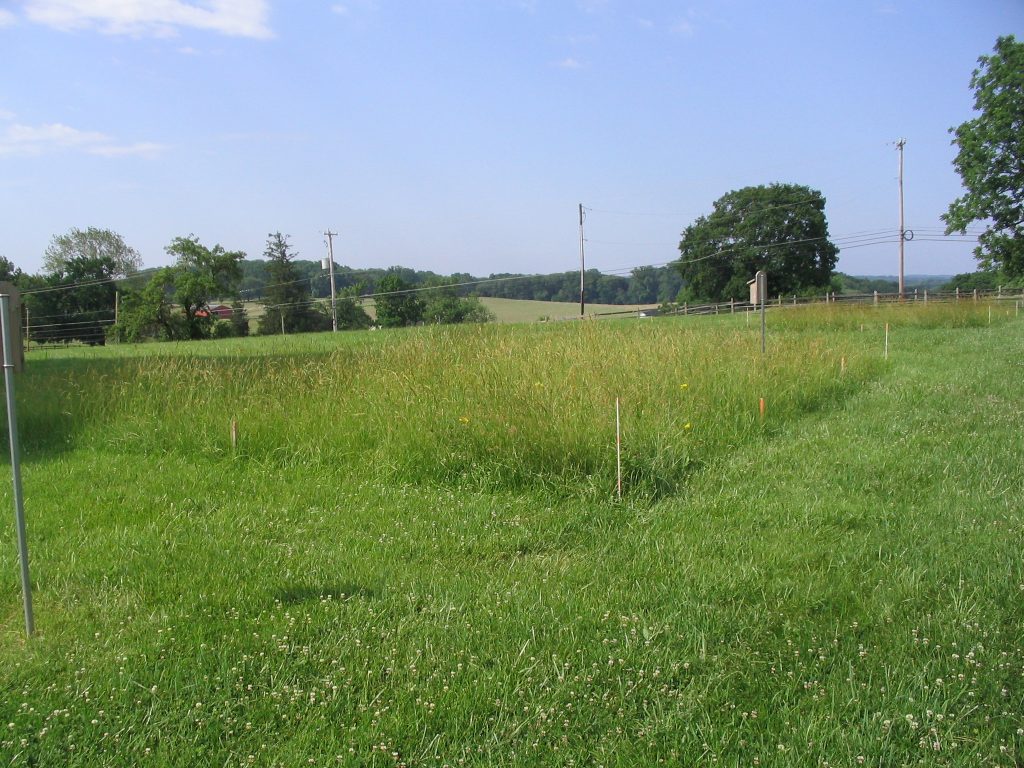By: John Holback, Stewardship Manager
One of our recent initiatives at Willistown Conservation Trust was the establishment of a small native plant nursery, designed to support our restoration projects and promote local biodiversity. Having our own nursery allows us to preserve the genetic diversity of local native plants through seed collection and propagation while saving a little money from purchasing plants (a small, yet significant benefit). Additionally, the nursery provides new and fun tasks for volunteers, who helped tremendously with construction, maintenance, and eventual planting. Being able to see the whole cycle – harvesting and sowing seeds, watching them sprout, caring for the plants, and finally planting them – is quite a rewarding experience for volunteers and staff alike. “Running” a nursery also served as a learning opportunity for staff who had to decide what plants to grow, how to grow them, how to propagate collected seeds, and how to deal with the impacts of environmental stressors like pests and drought.
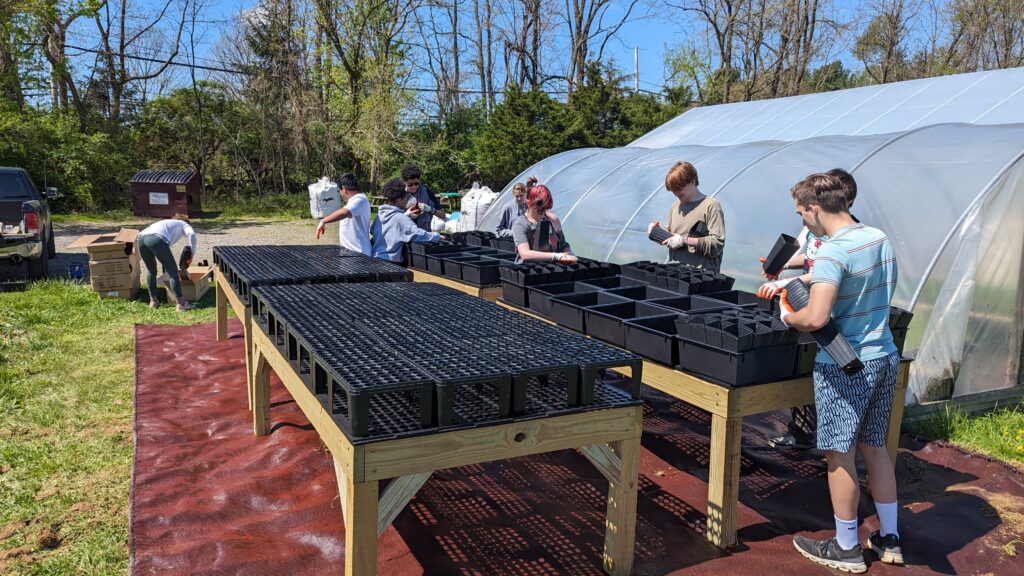
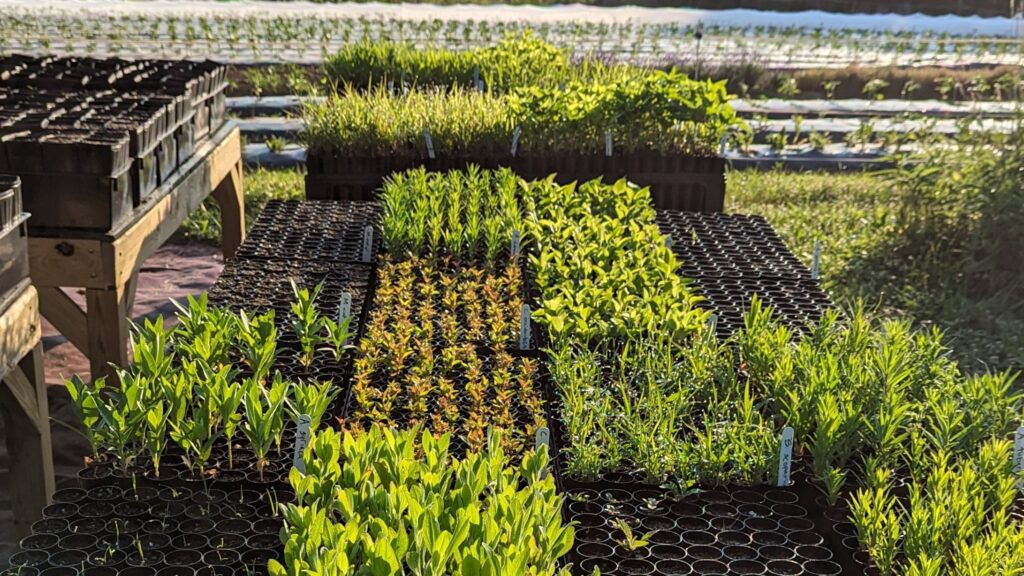
This past winter, several volunteers came out to help construct our nursery tables with lumber that Beatty Lumber & Millwork Company generously donated. Four tables were built to accommodate about 3,000 small plugs (narrow but deep cone-shaped tubes allowing herbaceous plant root growth) and 600 small trees and shrubs. In late April two groups of students – one from Delaware County Friends School and one from The Episcopal Academy – came out to help fill the individual plugs and tree containers with potting mix, which they mixed by hand with sand for better drainage and root development. In May, staff planted each of the 3,000 plugs with native grass and forb seeds. Several species were planted including Indiangrass, Little blue-stem, Butterfly Weed, and Buttonbush. Between June and July, we had 2,500 seeds germinate into vigorous seedlings.
By August, the heat and dry weather began roasting the still small and vulnerable plants. It became difficult to keep up an effective watering schedule and some of the seedlings did not survive. A shade cloth was installed halfway through the summer to keep further sun damage to a minimum. Thankfully, the seedlings didn’t have long to wait, as September was our target planting month. Throughout several volunteer events, 1,500 seedlings were planted and watered in. The hard, dry ground made digging very difficult so a variety of hole-digging methods were tested. What worked best was using a small auger on a corded drill to dig the 2” wide holes necessary for the plugs. All of the grass seedlings were planted in Kirkwood Preserve and many of the perennial flowers were planted at the Rushton Conservation Center and in the meadow at our main office.
In October, we collected acorns, viburnum fruits, persimmons, and buckeyes to grow in the tree containers. A previous group of volunteers from the Young Men’s Service League, collected and planted close to a hundred White Oak acorns which will germinate and grow outdoors this winter and be planted next fall. Once the rest of the tree containers are planted, we can put the nursery to sleep for the winter. In the early spring, we will repeat the process, making changes where necessary, in anticipation of another successful and fun year of growing our own native plants.
